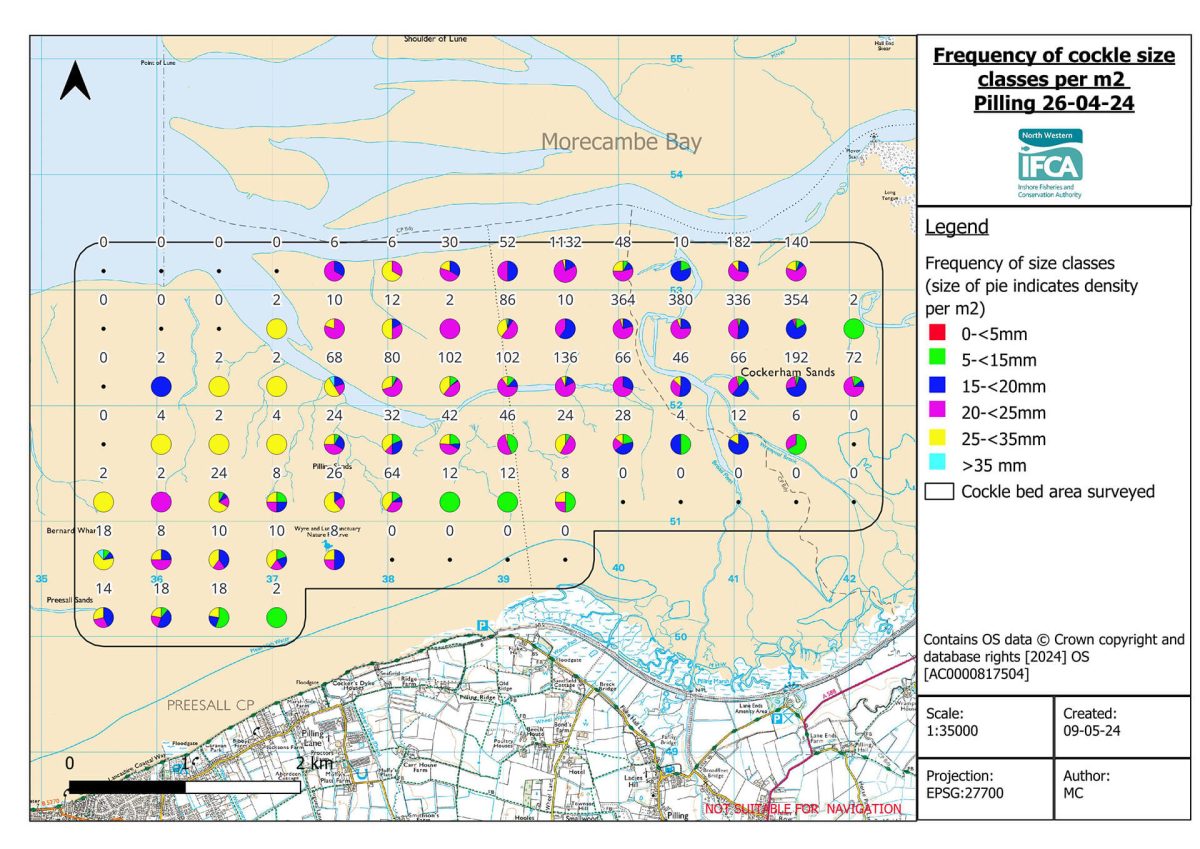NWIFCA April/May Cockle Survey Results and Consultation
At an Extraordinary TSB meeting on March 6th, NWIFCA members voted to open the cockle fishery on July 1st subject to satisfactory survey results.
Officers undertook a full stock assessment of Morecambe Bay between late April and early May. These results are presented below.
The results identify:
- A significant proportion of cockle remains undersize.
- Biomass of size cockle is still low.
- Stock is highly mixed, with no discrete patches of size cockle across any of the beds.
- On Flookburgh and Pilling, there is a high biomass of undersize biomass that will likely reach size by September, but there is uncertainty as to how much this cockle will grow between now and a possible 1st July opening.
- Opening a fishery with such a highly mixed proportion of undersize cockle will likely have implications for management in the form of riddling and effort restrictions.
Based on this information, officers will therefore be recommending to not progress with a 1st July opening for this year, and resurvey Morecambe Bay in the summer with a view to a potential 1st September opening.
Industry Consultation
We would like your feedback on the results.
A summary of the results are provided below, for the full report please see: Agenda-Item-8-Survey-and-Inspection-Report-May-2024 (PDF).
Officers will present this feedback, alongside the survey results and their recommendation, at the TSB meeting on the 24th May, which will inform members’ decisions on either:
a. To open the fishery on 1st July
OR
b. To keep to the current closed season and resurvey the Morecambe Bay beds in the summer with a view to a 1st September 2024 open date (i.e to revert back to the current byelaw timings).
*Please note – in the event of a decision to revert to the current byelaw timings, officers will still explore the potential for a July opening in 2025.
Once you have reviewed the results, you can provide your feedback by filling out the questionnaire here: NWIFCA April/May Cockle Survey Results Questionnaire.
Use of data
Why have you asked for my name or permit number in the questionnaire if it is anonymous?
All answers to the questionnaire and issues raised with officers will be confidential. The results of the questionnaire will be presented anonymously to the Authority and as a general summary of the results.
For the consultation to be fair to all stakeholders, we want to reduce the risk of any individual submitting multiple questionnaire responses. Your permit number and name are only taken to ensure you contribute only once to the consultation.
Morecambe Bay Overview
As of April/May 2024 there is an estimated 4,150 tonnes of size cockle and 7,839 tonnes of undersize over 7,372 hectares surveyed across Morecambe Bay. The density of size cockle is on average 6.8 cockle per m2.
The graph shows the total biomass of size cockle (blue) and undersize cockle (orange) from 2017 to 2024 for comparison.
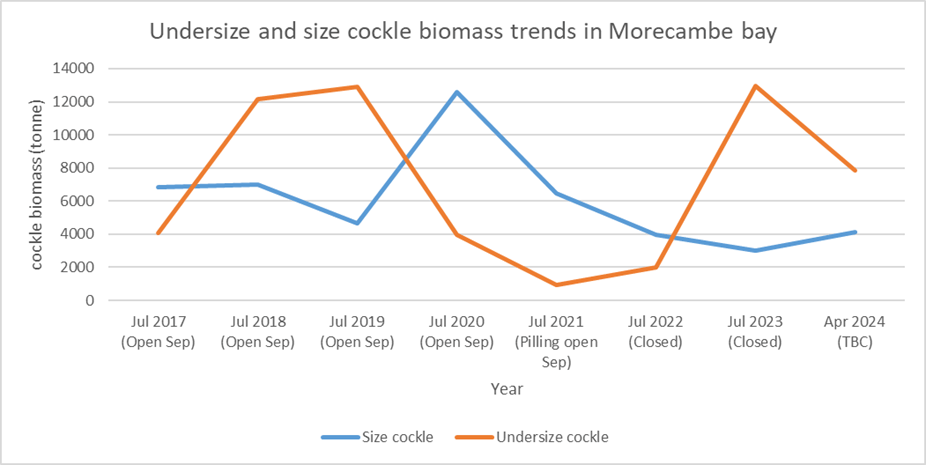
Aldingham and Newbiggin, Leven and Middleton have decreased in both size and undersize biomass since 2023.
Flookburgh and Pilling cockle beds have increased in size biomass since July 2023, though their numbers are still relatively low. The 15-20mm cockle size class identified in 2023 has survived the winter and grown on to contribute to a more significant 20-25mm size class. Much of the cockle in this size category is still undersize, but will likely grow on to size over the summer months.
There is a highly mixed composition of size and undersize cockle across all beds with no discrete patches of predominantly size cockle. There is a high proportion of undersize to size stock.
A highly mixed size fishery, with such a large proportion of undersize poses concerns for riddling and potential effort limitation restrictions.
Based on results, beds that would be considered for opening this year are Flookburgh and Pilling.
Overview of each bed in April/May 2024
The table below provides the biomass of size and undersize cockle for each bed from April/May 2024 surveys. Warton sands was unable to be surveyed due to inaccessibility.
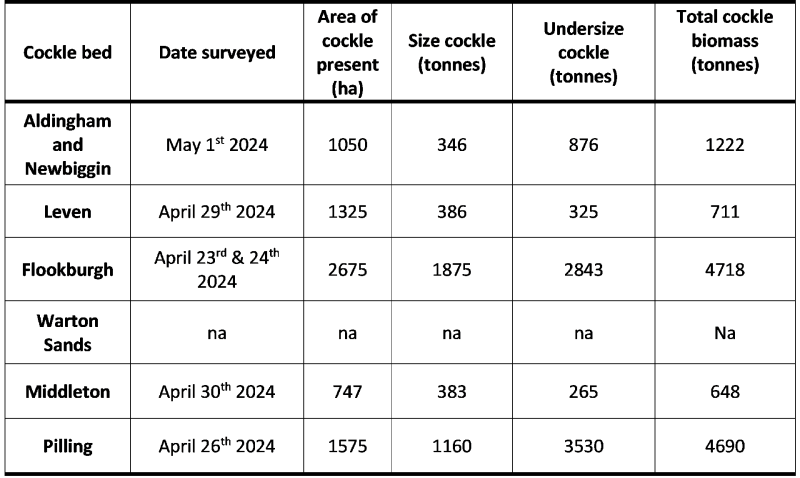
The following graph shows the biomass of size cockle for each bed, from 2017 to April 2024 for comparison. Bars framed in black indicate the bed was opened that year.
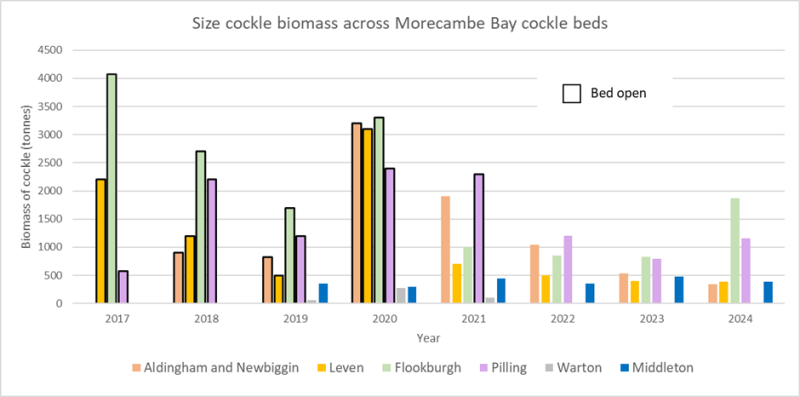
Flookburgh and Pilling are the two beds up for consideration following the April/May survey results. Further information specific to these beds is provided below. For further information on Aldingham and Newbiggin, Leven Sands and Middleton, please see the full survey results here:Agenda-Item-8-Survey-and-Inspection-Report-May-2024 (PDF).
Flookburgh April/May 2024 results
Density of size: 9 per m²
Density of undersize: 35 per m²
The size composition of cockle is mixed across the bed. The area is broadly split by a channel running from Grange-over-sands and out from Humphrey Head. The area is accessible by quadbike. The area to the west has more size cockle mixed in with smaller size classes. The majority of the cockle to the East of the channel is undersize. Size cockle is relatively low in density. There has been a thinning in cockle density since July 2023 surveys, though some undersize has grown on to size.
Figure 1. The number of size cockle per m² on Flookburgh.
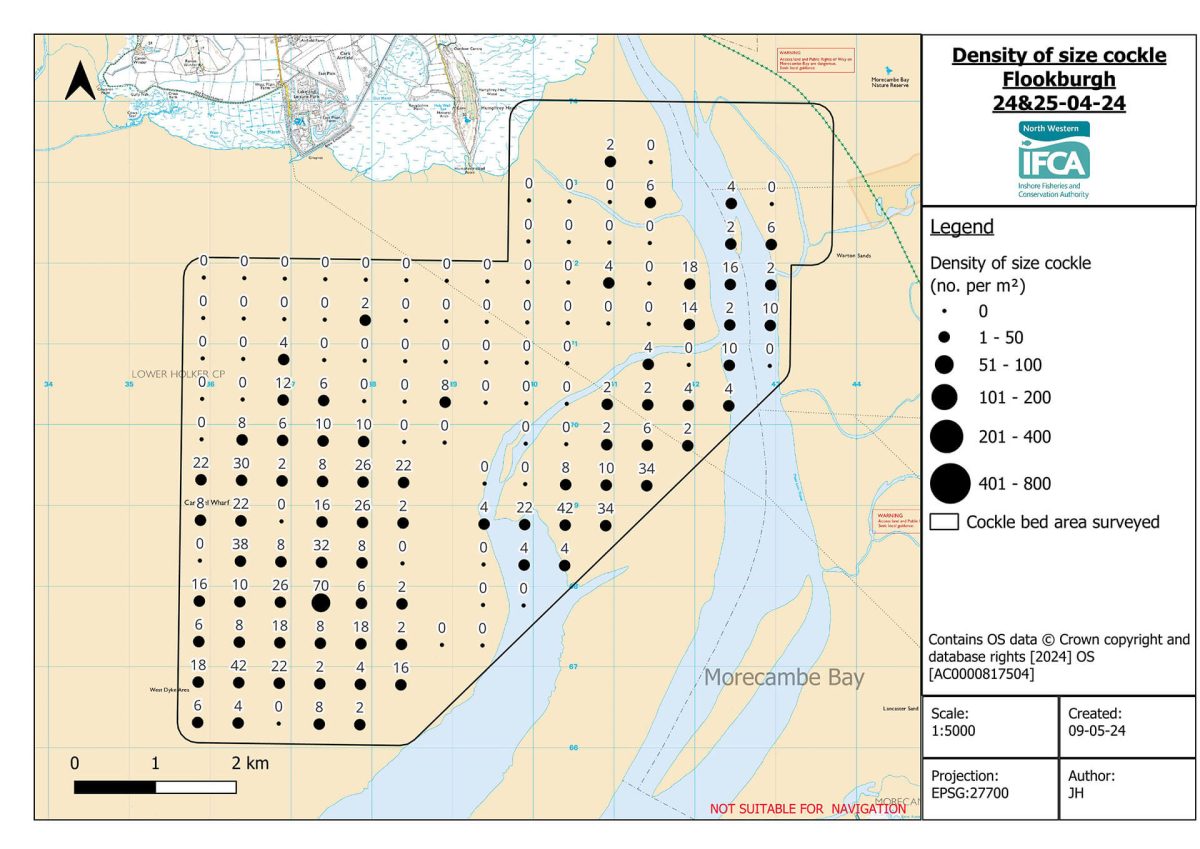
Figure 2. The number of undersize per m² on Flookburgh.
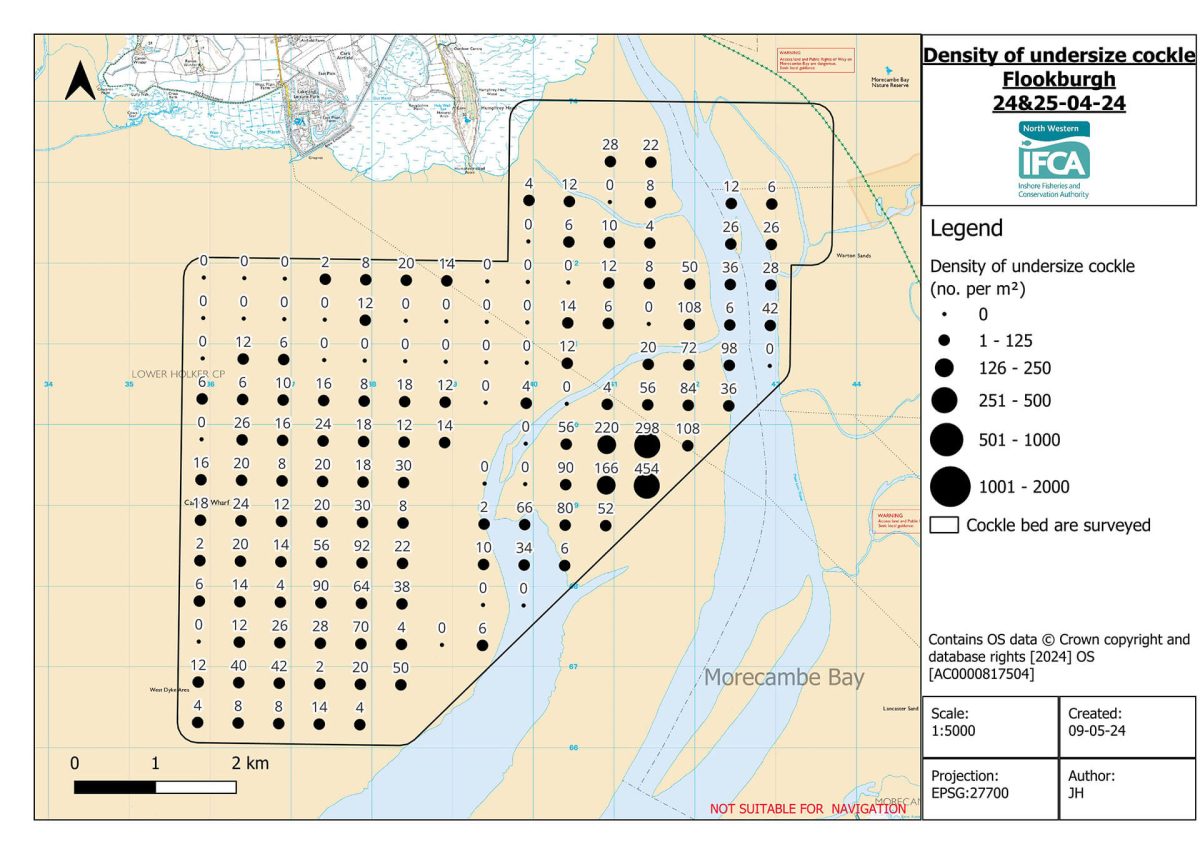
Figure 3. The composition of size classes of cockle per m² on Flookburgh. The numbers above the pie charts show the total number of cockle (both size and undersize) found at that sample location.
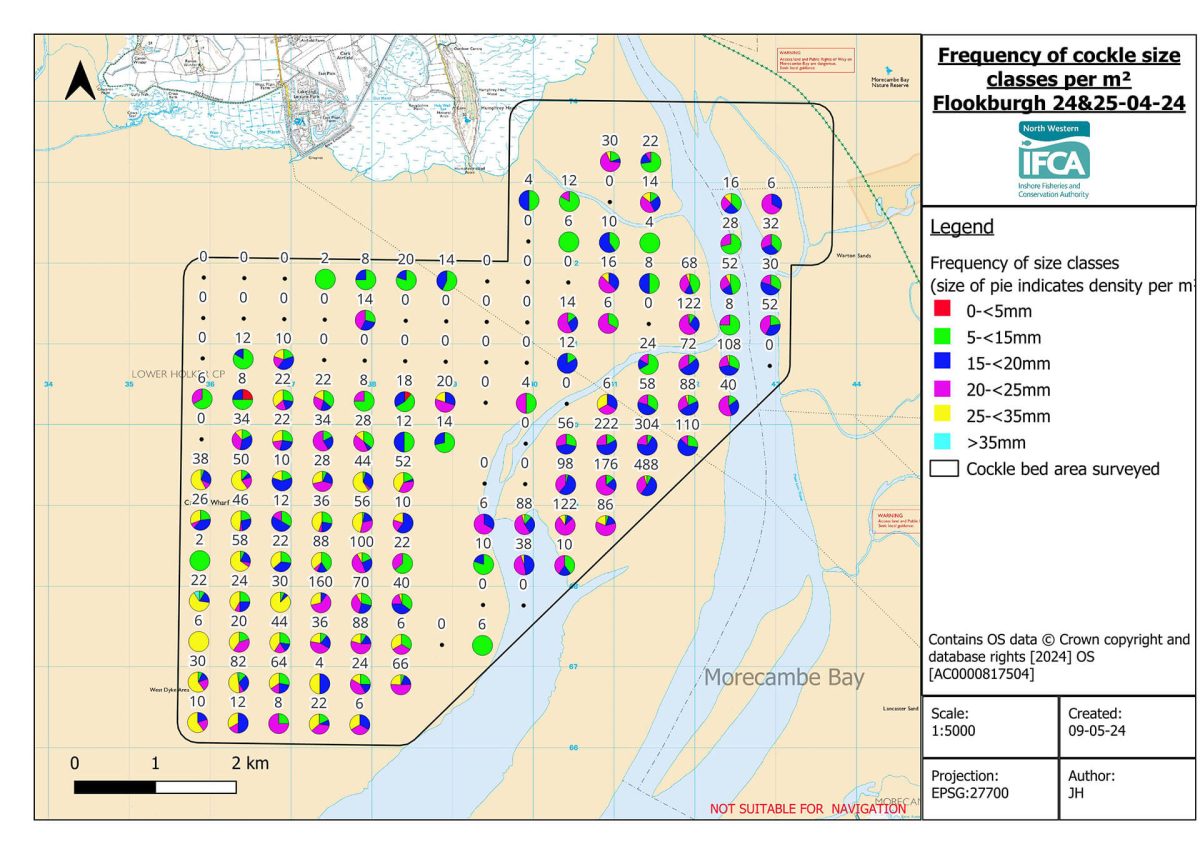
Pilling April/May 2024 results
Density of size: 9 per m²
Density of undersize: 64 per m²
Size cockle is relatively low in density across the bed, with the majority of size cockle to the West. A dense patch of undersize cockle is present at the North-eastern portion of the bed. A significant portion of the bed is still undersize at this stage in the 20-25mm category.
Figure 1. The number of size cockle per m² on Pilling
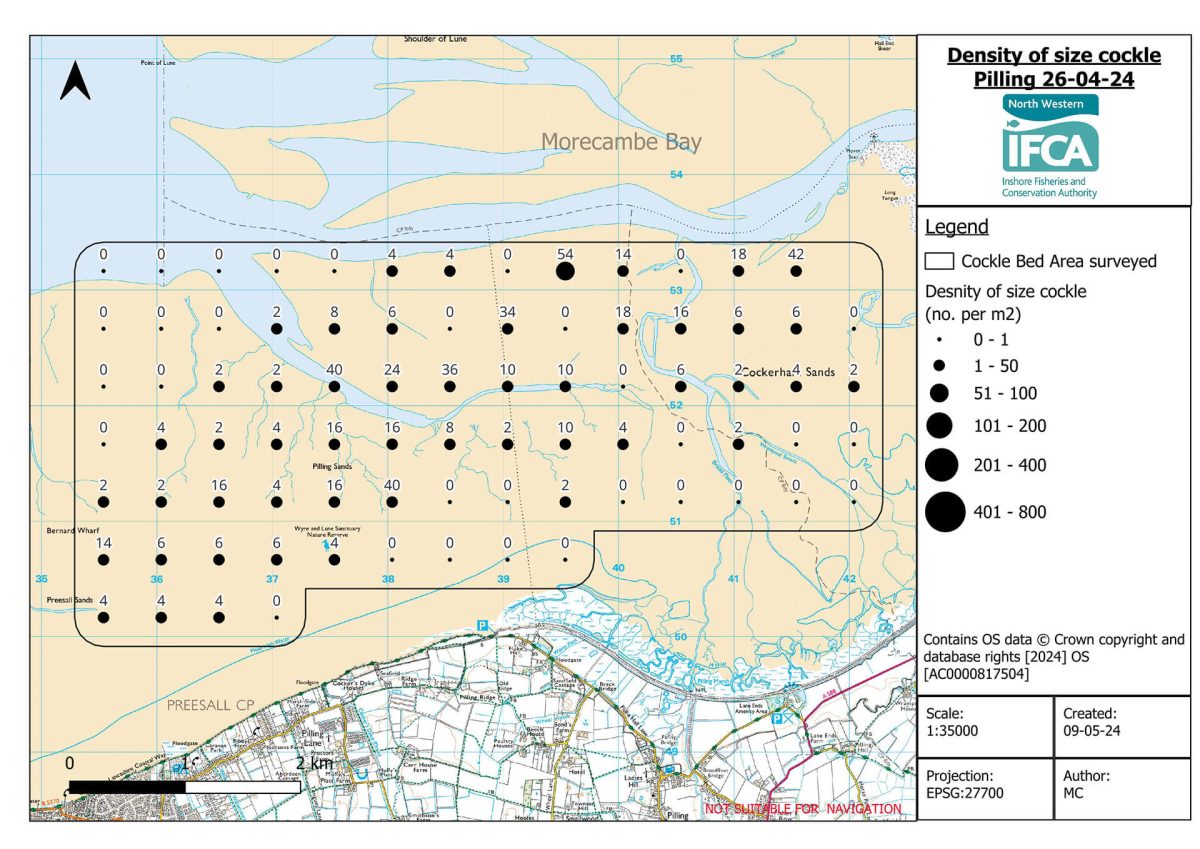
Figure 2. The number of undersize per m² on Pilling
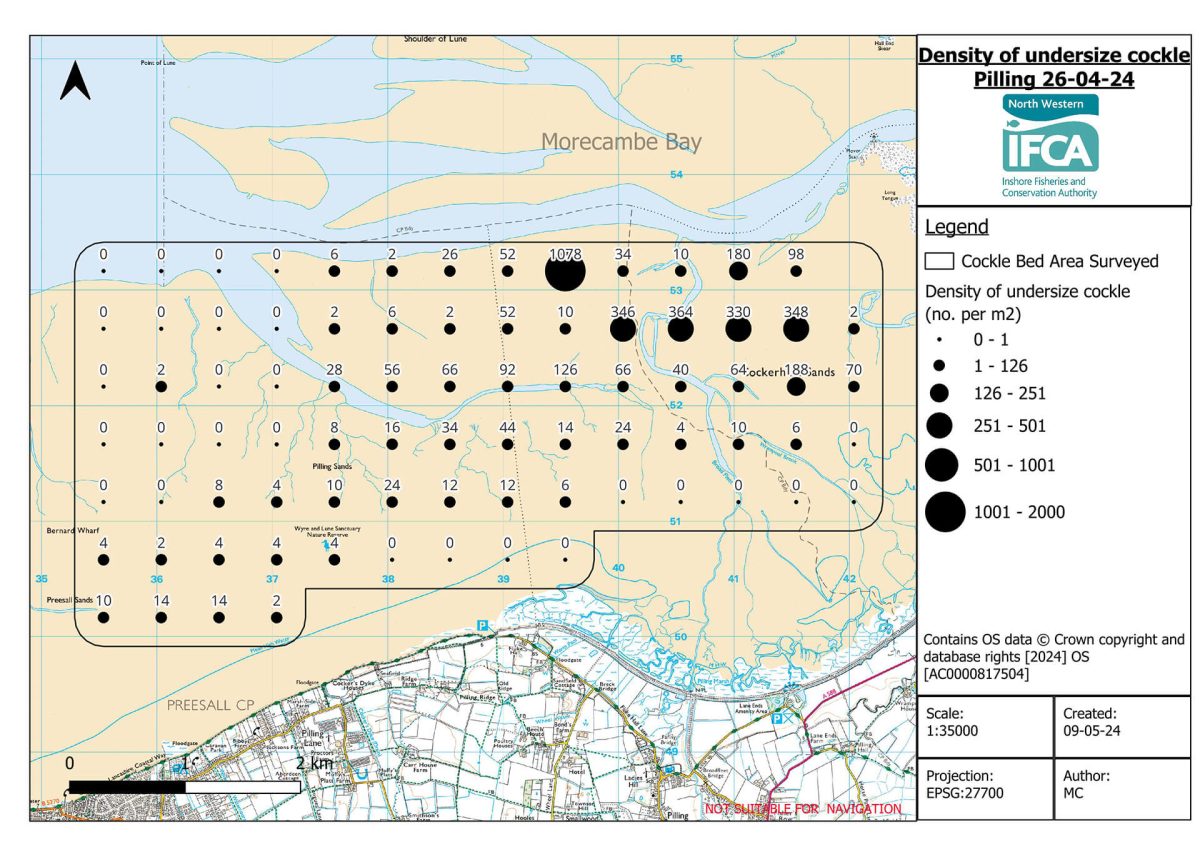
Figure 3. The composition of size classes of cockle per m² on Pilling. The numbers above the pie charts show the total number of cockle (both size and undersize) found at that sample location.
